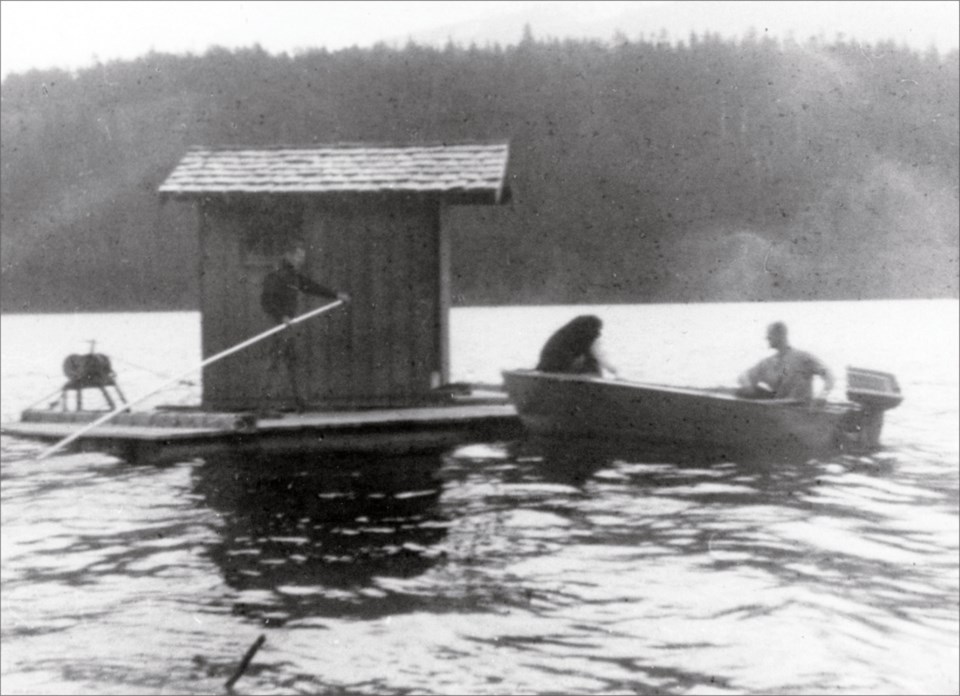When Glen Creelman arrived in the Whistler area in 1960, it wasn’t for the skiing or fishing. Creelman moved to Alta Lake (as it was known at the time) to work for the Pacific Great Eastern Railway (PGE) as a communications lineman, maintaining the telephone line and new microwave station.
Glen had recently graduated from technical college and his arrival at Alta Lake in April was newsworthy enough to be remarked on in the Alta Lake Echo, the newsletter of the Alta Lake Community Club, which stated, “our new telephone lineman is young, handsome, single Glen Creelman.”
Over the following months, as he became part of the small Alta Lake community, his comings and goings and activities were also reported on in the Echo, including when his family came to visit, when he bought a canoe, and when he started organizing softball teams for Alta Lake residents and the nearby logging operations. As a resident of Alta Lake, Creelman was a founding member of the Alta Lake Volunteer Fire Department along with Dick Fairhurst, Doug Mansell, and Stefan Ples (he served as assistant chief), and a founding member of the Alta Lake Sailing Club.
As the communications lineman, Creelman was responsible for looking after the microwave station on Whistler Mountain. The road up to the station (now known as Gondola Way) could be driven up in his vehicle for much of the year, but in the winter Creelman was given a Tucker snowcat to make the journey. In an interview in 2023, Creelman described this snowcat as “hopeless” and recalled that he would often park it, put on snowshoes, and then walk most of the way up to the station. He was later given a better machine, which he called “Little Tucker,” that could make it all the way up to the station.
As one of the few people in the area with a snowcat, Creelman had the experience of driving Franz Wilhelmsen and other members of the Garibaldi Olympic Development Association up Whistler Mountain in the early 1960s when they began planning for lifts and ski runs. Creelman was also there when they began constructing these lifts in 1965 and helped pull the cable for the Red Chair when it was installed.
Another part of his job was to maintain the telephone line that ran along the railway, which was also made more difficult by snow. According to Creelman, winters could be pretty snowy and wet and it was not uncommon for the snowplow that cleared the tracks to throw wet snow onto the telephone line and break it. Creelman would have to go out, go up the telephone pole, tie a rubber-covered cable to one of the breaks, and then go along the tracks to find the other end and reattach the wire, climbing and working alone as the only lineman for the section.
After Whistler Mountain opened for skiing in 1966, Creelman started teaching skiing on the weekends, first for Ray Ferris and Alan White and then for Jim McConkey after he took over the ski school. It was through skiing that he met his wife Trish who first visited Whistler Mountain in February 1971. She was promptly offered a job at the Mount Whistler Lodge and moved up for the rest of the winter. According to Trish, the first time Glen saw her she was climbing on the bus at the bottom of the dump run after a long day of skiing. Like Glen, Trish taught skiing for Jim McConkey, as well as working at the Mount Whistler Lodge and then Rudi’s Steakhouse.
Apart from one year when he went travelling, Creelman continued to work as the PGE (and later BC Rail) lineman for the area until 1973, when he and Trish left to get married in Ireland and then settle in the Kootenays, where Creelman grew up. By the time they left, Creelman had seen the small Alta Lake community transform into a growing ski area.




